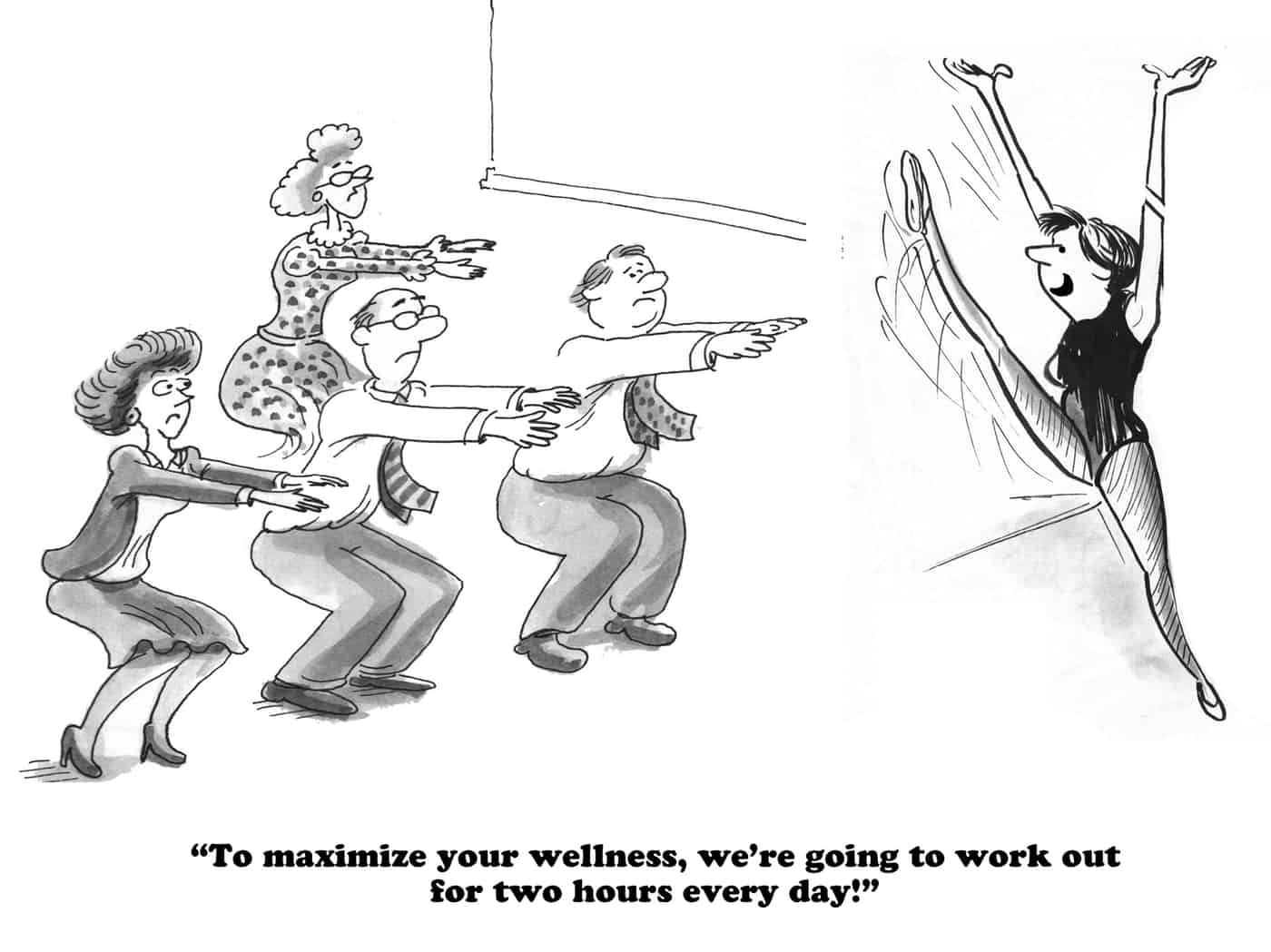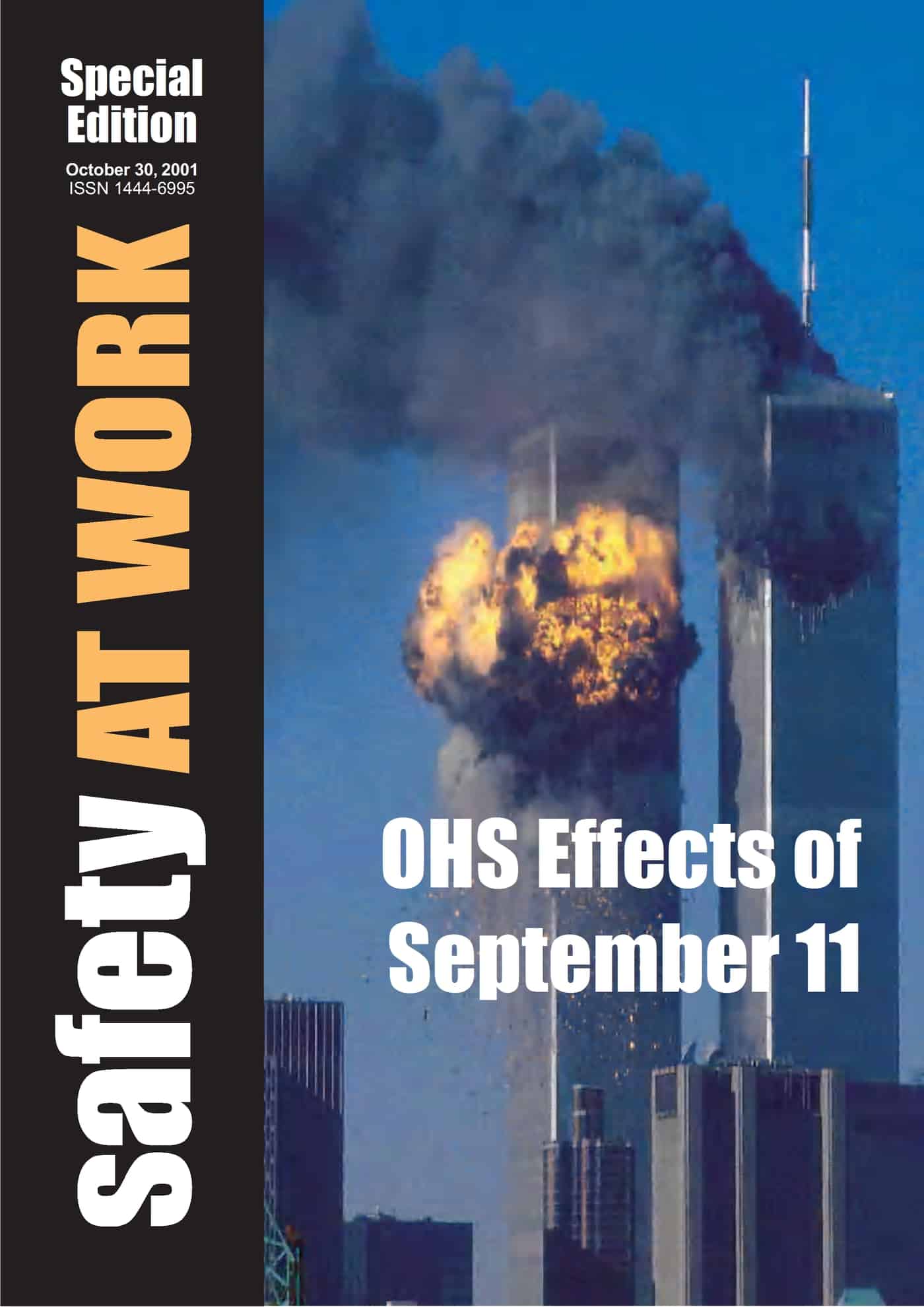Cost is the last consideration in occupational health and safety (OHS) but is usually the first consideration in all other decisions. “Can we afford to improve something? No. So let’s do something else”. There is something fundamentally skewed in determining the cost-benefit analysis when it comes to workplace safety. For several years Safe Work Australia (SWA)…
Wellness programs need to fit business management
Recently Corporate Bodies International circulated an annual membership offer (no costs listed in this link) to its Australian market. It said:
“Employees and their families have access over to over 300 live webinars and exercise classes, monthly health videos, posters, online GP, Dietitian and Exercise Physiologist appointments – from anywhere in the world, just to name a few of the inclusions. All of this for little more than the cost of a cup of coffee.”
It is the last line that requires a bit more consideration as no program only costs just what marketers claim.

The CBI offer included a link to a flyer about its Healthy Bodies Subscription which involves $A1,800 per annum for companies with less than 100 staff to about ten times that for a much larger number of staff. The services extend from webinars, posters for toilet walls and newsletters to “GP2U Online GP Access” which involves:
“Diagnosis, immediate prescriptions, specialist referrals and medical certificates, all from the convenience of the office. Designed for critical workers or the executive team, minimising work disruption”.
For an organisation that has no occupational health and safety (OHS), Human Resources or well-being resources, purchasing a package like this may be financially attractive but it can also lock one into a pool of medical advisors that could generate conflicts later on with, for instance, insurers, legal representatives, project partners and others. The provision of “immediate prescriptions” may also be a benefit that needs some further investigation – prescriptions by who? For any medication?
A company needs to decide whether it wants to be in total control of the medical services it may offer, or may need to offer, to its employees and whether subscriptions are sufficiently responsive to meet the fluctuations that occur with any workforce and with the business’ profitability.
It is also worth considering whether employees can choose to opt-out and continue being diagnosed or treated by their own physician. How would such a corporate subscription allow for this worker right? If the worker opts out, would this be seen as being disloyal? Would this reduce the number of workers covered by the subscription and affect the overall cost to the company?
Owning the welfare program for one’s own employees allows a company to shop for the best deal and to tailor the program to match the fluctuations of the company’s needs. Would this cost more than the subscription fees in the table above? Almost certainly, IF the subscription cost was the only cost involved. It is important to look beyond cost to operating costs like management control, good governance and due diligence – to the broader context to which occupational health and safety law is pushing Australian companies. These factors are rarely costed and are frequently overlooked, probably as a consequence of not being measured. It is a shame that such “intangibles” are accepted as part of economic assessments but are dismissed in relation to OHS.
The OHS challenges presented by penises, testicles and hotel sex
Every profession and occupation has its weird stories, the “you wouldn’t believe it” stories. Occupational health and safety (OHS) is no different. There are stories of a degloved penis, complications from piercings in private places or chemical burns on private parts that reinforce the important of washing hands thoroughly after touching chemicals. Such stories can be…
safetyATWORK magazine on 9/11
 SafetyAtWorkBlog originated from the SafetyAtWork magazine, a PDF subscription magazine that ran for a few years. In October 2001 we published a special edition of the magazine focussed on the 9/11 disaster. It has some exclusive articles and other safety content from a range of authors. We have made it available for the first time through this blog to mark the 15th anniversary of the event.
SafetyAtWorkBlog originated from the SafetyAtWork magazine, a PDF subscription magazine that ran for a few years. In October 2001 we published a special edition of the magazine focussed on the 9/11 disaster. It has some exclusive articles and other safety content from a range of authors. We have made it available for the first time through this blog to mark the 15th anniversary of the event.
Citi’s 2015 Safety Spotlight shines light on some OHS areas
[This article from 2015 was previously password-protected and is now available to all] Recently a couple of media outlets referred to a report produced by Citi into workplace safety issues related to the top 100 companies on the Australian stock exchange. The report, “Safety Spotlight: ASX100 Companies & More” (not available online), provides a useful…
The youth and gender agenda
The Safety Institute’s National Convention was given a youthful injection this morning by the presentation of Dr Jason Fox (pictured below, with beard). He challenged our thinking and our occupational health and safety (OHS) future, even though the sound quality was not as good as it could be leading to some of his words being missed.
 One of the most visible changes in this conference is the presence of women on the speaker panels. Each of these panels has illustrated and reinforced the need to change from the usually safety conference speakers, who are experts and important to listen to, away from the male-based (but changing) stereotype of the safety profession to which many speakers have referred. The SIA is trying to provide gender diversity but it, like so many other organisations, is not there yet in its transition from old to new and from past to future.
One of the most visible changes in this conference is the presence of women on the speaker panels. Each of these panels has illustrated and reinforced the need to change from the usually safety conference speakers, who are experts and important to listen to, away from the male-based (but changing) stereotype of the safety profession to which many speakers have referred. The SIA is trying to provide gender diversity but it, like so many other organisations, is not there yet in its transition from old to new and from past to future.
Panel member Jen Jackson (pictured) was not included as a speaker but she showed enough thoughtful contribution and personality that a presentation on safety communication would have been useful. She complemented the speakers and panel well and her response to her exposure to the safety profession would have generated a fresh external perspective.
I have written before that I think some speakers, experts and academics should be read rather than heard. Dr Fox is a vibrant speaker but twenty minutes, as Drew Rae has pointed out in a comments sections of this blog, does not allow nuance, discussion or debate. I have read some of Dr Fox’s GameChanger book and that media format allows for reflection and thought but try to see Dr Fox present on change first. He is a terrific multimedia knowledge package..
I can’t blog about the content of the second conference session as I need to listen back to it so as not to simply reiterate the talking points and audio grabs. But this session was lively and benefited from the mix of expertise from Andrew Hopkins, Jason Fox, Peter Baines, Siobhan Flores-Walsh and Jen Jackson.
Andrew Hopkins supports the abandonment of safety culture
Culture and safety culture are misunderstood and abused terms, according to Professor Andrew Hopkins speaking at the SIA Safety Convention in Sydney today. His perspective as a social scientist reinforces many of the speakers on disruption at yesterday’s sessions. If culture is the characteristic of individuals, culture is transferable or portable outside the workplace but…
